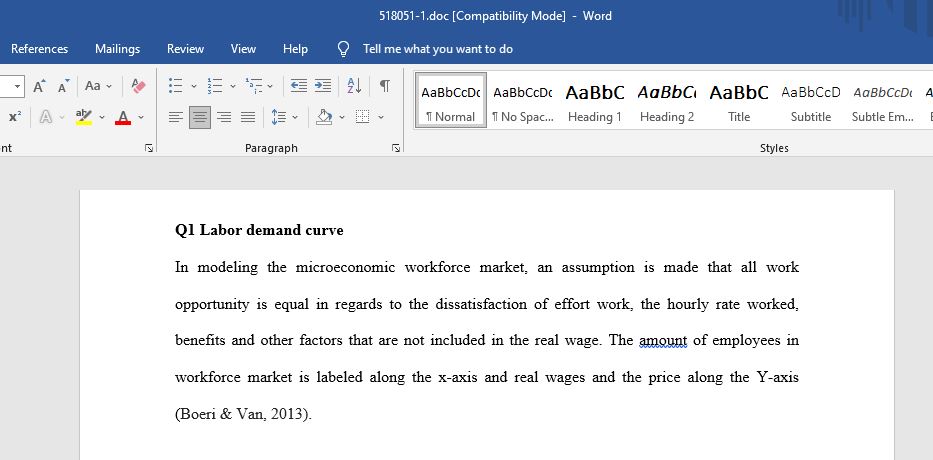Labor demand curve
- Order Summary
- Type of assignment:Assessment
- Academic level:College Level
- Referencing style:APA
- Number of sources:4
- Subject:Business
- Client country:Other
Assignment extract:
please Answer questions as the sample questions.
please use understanding language.
Questions:
Q1. What is meant by market equilibrium and how might a market equilibrium change. (15 marks)
Q2. Why might marketing expenditure be important to a firm that operates in an industry that is characterised by monopolistic competition but unimportant to a firm that operates in a perfectly competitive industry? (15 marks)
Q3. How can government’s act to reduce unemployment through monetary or fiscal policy? Why might such action be considered a bad idea? (15 marks)
Q4. Why might borrowing overseas at interest rates lower than domestic interest rates to fund your investment expenditure be a risky strategy? (15 marks)
Basic issues to be considered in answering questions
Q1. In answering this question you should explain the construction of the supply and demand curve. Equilibrium should then be explained as the point of intersection between the these two curves. You should then explain why it is an equilibrium and why it tends to be stable. You can then explain how equilibrium can be changed by shifts in either the supply curve or the demand curve or by shifts in both. Explain the factors that would give rise to such shifts and provide examples of how such factors might operate in the real world.
Q2. You will need to explain that in perfect competition advertising only increases a firm’s costs, it makes no difference to the position of the firm’s demand curve, and therefore will only lead to a loss in the long-run which might be accompanied by the firm exiting the industry. In an industry characterised by monopolistic competition, the long-run equilibrium is for the firm to earn normal profit. Expenditure on marketing might shift the demand curve to the right allowing the firm, for a time, to earn an economic profit.
Q3. Governments can reduce unemployment by undertaking policy action to shift the aggregate demand curve to the right. This can be done by increasing the money supply to reduce interest rates and encourage spending. Governments can also encourage expenditure by reducing taxes and by increasing their own expenditure. Governments could also use a combination of changes to the money supply, taxes and expenditure to achieve their goals. However, if the economy was already close to full-employment, expansionary policy may create an unwanted increase in inflation without having more than a short-term impact on unemployment.
Q4.The difference in nominal interest rates does not take into account movements in the exchange rate. If the domestic currency depreciates over the period of the loan, borrowers would have to pay many more units of domestic currency back to their foreign lenders at the end of the loan than they had expected – almost certainly wiping out any apparent interest rate advantage. At least one Australian bank has wrongly advised it clients on this issue.
Answer preview:
Word: 1,600

